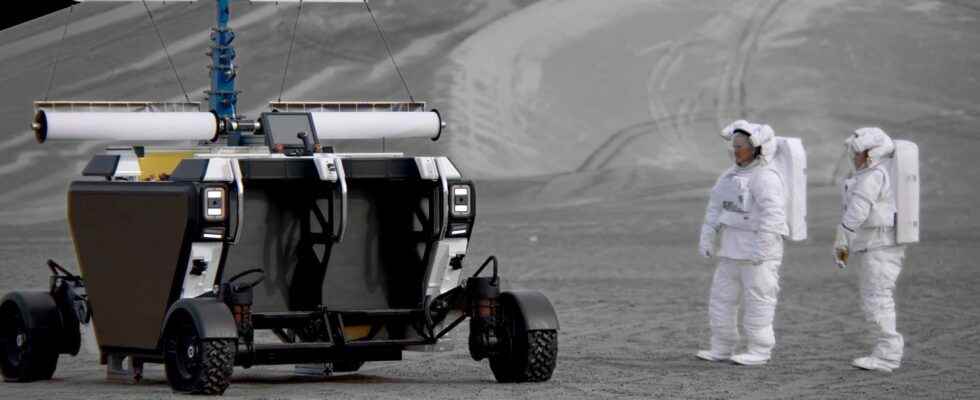You will also be interested
[EN VIDÉO] Watch what the Artemis mission launches will look like At the end of 2021, NASA’s new heavy launcher, the SLS (Space Launch System), will launch the first Artemis I mission to the Moon. This is what its first flight will look like.
The first time we rode the Moonit was July 31, 1971, with the Apollo 15 mission. the Lunar Roving Vehicle (LRV) had also been used during missions 16 and 17. The LRV was a formidable asset for recovering lunar samples further than around the lunar module. This allowed a better diversity of the rocks sampled. Once again, the Nasa needs a future LRV for its Artemis program. The Flex project responds to this.
In February 2020, NASA is launching its call for ideas to all American industry on a concept of the future Lunar Terrain Vehicle (LVT, Lunar Terrain Vehicle). As a condition, the rover don’t be pressured. It will be used to explore the surface of the South Pole of the Moon, a future exploration site of the Artemis program.
Several pundits in the aerospace industry have already responded. Northrop Grumman, in partnership with several companies, is working on a rover design. There is also Lockheed Martin in partnership with the giant automotive General Motors. For subsequent missions, Japan will provide a pressurized rover. The competition is therefore tight for Astrolab, but their mode of development seems much more efficient.
Flex, but not only in its name!
The Flex rover (Flexible Logistics and Exploration) is a real small truck. It is capable of carrying 1,500 kilos of load as cargo. Two walkers can board and drive it, but the rover can also be controlled remotely. It is flexible according to NASA’s choices: if the agency wishes to use it for freight, to install solar panels on the surface of the Moon, or for the transport ofastronauts. Astrolab is even considering apps terrestrial.
The rover is equipped with four wheels. The start-up has set up a strategic partnership with the Venturi group, a producer of electric vehicles. Venturi provides the wheels, batteries and possible technology exchanges.
Astrolab is very efficient. They already have a prototype of Flex and have started testing it. They even carried out tests with the retired Canadian astronaut Chris Hadfieldwho made three spaceflights, and who also served as head of the Department of robotics at NASA’s Astronaut Office. His experience helps Astrolab a lot to clearly understand the expectations of future astronauts on the Moon.
Chris Hadfield, retired from NASA tested driving the Flex rover and shares his experience. © Astrolab
New Space on the Moon
Astrolab quickly moved on to prototyping in the same spirit as SpaceX with the Starship. It must be said that the founder, Jared Mattheus, is a former SpaceX. He also went through the Jet Propulsion Laboratory and had worked on martian rovers and on a lunar rover concept for the Constellation program, ancestor of the Artemis program. The key word is “iteration”, that is to say to prevail the tests on the modeling as traditional manufacturers often do.
Astrolab is not the first company in the new space to try the adventure of the Moon. For several years, NASA has invited New Space to come and propose its innovations for the Artemis program. This was seen when NASA chose the Starship of SpaceX as the only lunar lander, but also through the CLPS program (Commercial Lunar Payload Services). The Californian start-up aims to join the Artemis adventure with Flex. But there is still some way to go to have a real model, it will probably have to expand (Astrolab has 15 employees), and ensure its financing.
Interested in what you just read?
